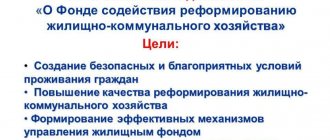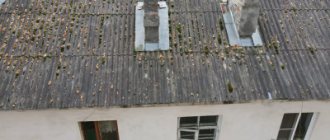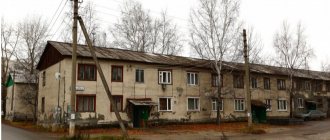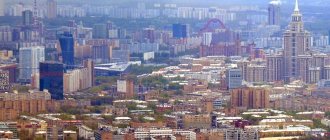- ow. 9, building 1;
ow. 21, building 1.
The list of houses subject to demolition for renovation in Moscow includes 5,144 buildings. In 2021, the first displaced people will be given apartments in new buildings. They will become property free of charge. Residents are offered equivalent apartments. From a one-room apartment, residents are moved into a one-room apartment, and from a communal apartment - into a studio. If you want to get a larger living space or with more rooms, you need to pay for each square meter of additional space.
The department reminds that volunteers who decided to dismantle the facility on their own or who declared their consent to dismantle with the assistance of the city have the right to receive compensation. Payments for demolition by the owner amount to 55.5 thousand rubles per sq.m of real estate. If the owner turned to the city for assistance, compensation will be 51 thousand rubles per sq.m. The period allotted for voluntary dismantling is calculated taking into account the height of the unauthorized construction and the area of the occupied site.
For the voluntary demolition of a dangerous object, entrepreneurs receive compensation. It is paid by the prefectures of administrative districts no later than two months from the date of the corresponding application from the owner. Capital entrepreneurs receive 55.5 thousand rubles. for every square meter of illegal real estate demolished, if the object is dismantled on its own. If the owner cannot cope on his own and asks the prefecture to help demolish the building, the compensation is 51 thousand rubles. per each “square” of an unauthorized construction site. If the buildings are not dismantled by the owners, the city authorities will forcibly demolish them no earlier than two months from the date of publication of the resolution.
At the end of June, Moscow authorities published a new list of unauthorized buildings for demolition, which included 107 buildings with a total area of 31 thousand square meters. The “second wave” of demolition of unauthorized buildings took place at the end of August, with most of the owners agreeing to dismantle illegal buildings themselves. At the beginning of October, 43 objects with a total area of 26.7 thousand square meters fell into the “third wave”.
Muscovites whose houses were included in the renovation plan were rightly worried about where they would be moved. Most of the houses being demolished are located in prestigious areas, where land and real estate cost exorbitant amounts of money. The authorities reassured the townspeople with the statement that a significant part of the residents would be resettled in the same areas or in those closest to them. Resettlement will occur in waves. By the end of 2021, residents of old houses, which is more than 10,000 people, will receive the keys to new apartments. And by 2021, 59 new houses will be put into operation, and another 26 thousand Muscovites will be resettled.
The renovation project covers not only residential premises, but also retail and warehouse space. Businessmen who had premises in demolished buildings will also be provided with the necessary space on the ground floors of high-rise buildings.
All houses meet modern quality standards. And they were erected in places where unsightly five-story buildings previously stood. The area of the new apartments is the same as before, but living in them will be comfortable. And such apartments will cost 30% more. Not surprising, since the entrances will be equipped with intercoms, and energy-efficient batteries and meters will be installed in the apartments. Plus a convenient layout, separate bathroom, plastic windows, metal entrance door.
The renovation program itself is designed for fifteen years, that is, until 2032 it is planned to demolish the five-story residential building and build new facilities on the vacated territory. According to the head of the Moscow Construction Department, the facilities under construction will be built according to modern designs, based on monolithic structures and panels that can last about a hundred years.
The list of the third wave included 43 unauthorized buildings. More than a third of them are at Petrovsko-Razumovskaya. “When we opened a new station, citizens came up to me and asked me to restore order,” says Moscow Mayor Sergei Sobyanin.
It is also planned to demolish illegal buildings near the Tsaritsyno, Kantemirovskaya, Domodedovskaya, Skhodnenskaya and Kuzminki metro stations. Several real estate properties will be dismantled near the Vykhino and Volgogradsky Prospekt metro stations.
- Eastern District 1061
- Western District 559
- Northern District 515
- Northeast District 500
- Northwestern District 432
- Central District 109
- Southern District 378
- Southeast District 818
- Southwestern District 520
- New Moscow 251
- Zelenograd 34
As already mentioned, there is a whole article in the civil legislation of our state about the demolition of unauthorized buildings under the number 222. Previously, until 2021, unauthorized construction could not be demolished simply at the unauthorized request of the administrative authorities. This was permitted only after a trial and the corresponding decision made thereon.
For example, on Novy Arbat, 8, building 2, in a small one-story building, adjacent to the Moscow House of Books, there is a cafe serving Thai cuisine.
A message has already appeared on its website about its imminent closure “due to the end of the lease.” The second building on the list for demolition on Novy Arbat is a two-story building, which today is occupied by an English pub.
It is the list of launch sites that is worth focusing on for now, since the demolition of houses and the relocation of residents will be carried out in waves after the construction of the launch houses. Experts have different opinions on this matter. Representatives and “Cyan” believe that the program of demolition of five-story buildings will continue.
After all, houses age over the years and the likelihood of them falling into the emergency pool only grows.
Specialist V. Zimokhin is convinced that despite the high costs, the city authorities will be forced to resettle people. This point of view was supported by his colleague A.
Pypin, however, he believes that the pace of the second company will not be so rapid.
Construction of a modern multi-storey building; Moving residents of demolished housing into apartments in newly built buildings; Carrying out dismantling work aimed at destroying emergency Khrushchev buildings; Construction of new residential complexes on a vacant and cleared construction site.
And the Moscow City Hall independently began dismantling buildings and kiosks. In the South-Western District, buildings 2 to 8 at 4 Vlasova Street will be demolished.
And in the South-Eastern District, 24 buildings are subject to demolition.
First of all, buildings from 4 to 9 on Novoostapovskaya Street 1, from 1 to 4 buildings on Ryazansky Avenue 40, building 2 are subject to demolition.
Also, free-standing structures at the following addresses will be scrapped: Many objects are located in the very center.
For example, on Novy Arbat, 8, building 2, in a small one-story building, adjacent to the Moscow House of Books, there is a cafe serving Thai cuisine.
The state inspectorate says that these buildings were built without permits
carried out without obtaining a construction permit or in the absence of permission to put into operation; the construction of the structure was carried out in violation of urban planning and building codes and regulations; construction was carried out on a site not provided for the purposes of construction or reconstruction or on a site with a type of permitted use not intended for these purposes .The official definition is given in Article 222 of the Civil Code of the Russian Federation.
sq.m. All of them are located on utility lines, as well as in territories with a special regime of use, including the security zone of linear metro facilities and the road network. Today, June 28, at a meeting of the Presidium of the Moscow Government, a new list for the demolition of unauthorized buildings was approved.
Let us remind you that the first 104 buildings were demolished in February of this year. Then cafes, restaurants, shopping centers, and stalls came under the bulldozer.
Zelenodolskaya street, no.
40, bldg. 2 12. 1st Novokuzminskaya Street, 19a 13. Khlobystova Street, property 17 14. Ryazansky Avenue, house 40, building 2, building 1 15. Ryazansky Avenue, building 40, building 2, building 2 16.
Ryazansky prospect, house 40, building 2, building 3 17.
“Those structures that are not dismantled voluntarily, the city will be forced to dismantle forcibly - no earlier than two months from the date of publication of the resolution,” the materials say.
No construction is planned in the liberated territories. The head of the capital's State Real Estate Inspectorate, Sergei Shogurov, announced this at a press conference.
According to him, 3,980 unauthorized construction projects occupied a total area of 1.25 million square meters.
The Moscow government dismantled 57 of 78 objects recognized as unauthorized buildings as part of the “fifth wave” of demolition.
The city will begin demolition of five objects at the following addresses: Novy Arbat, vl.
The Law on the Demolition of Five-Story Buildings 2021 became the basis for drawing up a preliminary list of applicants for dismantling. In particular, more than 4.5 houses were included in the demolition list, the owners of which were forced to save or dismantle them. Since 2021, Bashkiria has maintained a kind of leadership in the area of growth in the number of square meters of dilapidated housing.
This anti-record is primarily due to the fact that in post-war times in Ufa, the construction of so-called “commie blocks” proceeded at an accelerated pace and it is they that are now falling into disrepair due to their technical characteristics. One of the main reasons for recognizing housing as dilapidated and subject to demolition is its construction in the period from 1945 to 1970.
Construction standards were different then, and over time, construction engineers came to the conclusion that living in such housing was associated with a risk to life. List of houses for demolition in Ufa, planned from 2021-2021
This program has been operating in the capital since the end of 2021, when the first addresses of construction projects to be demolished were approved. In the winter of 2021, the first authorized demolition of illegally constructed buildings was carried out.
In wave 5, it is planned to demolish about 43 thousand square meters. These objects are included in this program on the basis that they are located on land plots with an established special regime for their use. Or these buildings are located on important engineering communications of the city. They pose a threat of creating an emergency situation, and therefore must be dismantled.
In 2021, the Moscow City Hall is offering compensation to the owners of such buildings for voluntary dismantling. The payment amount is calculated at the rate of 55.5 thousand rubles for each sq.m. demolished premises.
If the object is demolished voluntarily with the help of government agencies providing assistance in dismantling, the owner has the right to receive compensation in the amount of 51 thousand rubles for each square meter.
The cost of many demolished buildings is very high, and the compensation funds allocated by the government sometimes cannot compensate even half of the damage suffered by the owner of the demolished property.
After the first wave, when the owners did not believe that the Moscow city government would take extreme measures, many owners of demolished buildings filed a claim with the Supreme Court. The court sided with the government.
The owners were unable to provide permission to build premises in these areas. After this, the owners turned to other authorities. But the result was the same everywhere. That is why, during the third and subsequent waves, many owners agreed to dismantle their self-built buildings themselves.
According to the authorities, all vacated land plots are not subject to new development and will be landscaped in the form of lawns and park areas.
The demolition schedule for renovation has been approved. First of all, within the specified time frame, more dilapidated buildings that meet the following characteristics will be demolished:
- Location in the place of settlement.
- New buildings are being built next to buildings that will be demolished according to the schedule.
- The opinion of the Moscow population was taken into account.
- It is possible to implement a project in a short period of time.
- It is possible to relocate the maximum number of residents, according to the building density requirements, in the selected area.
- Locations with minimal encumbrance and utilities were selected.
- The apartment layout of the “starting” buildings corresponds to the apartment layout of multi-apartment buildings being resettled under the urban renewal plan.
- “Starting” sites are selected, taking into account further quarterly development in accordance with urban planning documentation developed for the implementation of the program.
Developers have already begun fulfilling the demolition schedule for houses under the renovation program in 2021.
A new program for the resettlement of emergency housing in the Russian Federation is planned to begin in 2021 - Housing and Communal Services Fund
02.08.2021 08:03 3298
| Tweet |
MOSCOW, August 2. /TASS/. A new program for the resettlement of emergency housing recognized as such after 2021 is planned to be launched this year. It is planned to allocate 45 billion rubles for it until 2024, the press service of the Fund for Assistance to Housing and Communal Services Reform told TASS.
“At the moment, proposals have been developed for the implementation of a new program for the resettlement of emergency housing, which are supported by the President and Chairman of the Government of the Russian Federation, drafts of the relevant regulations are currently being developed, the launch of the program is planned in 2021,” the press service said.
It is expected that 45 billion rubles will be allocated for it for the period until 2024, and the funds will be distributed in proportion to the volume of emergency housing, the fund clarified. Participants in the program at the initial stage should be regions that have fulfilled the tasks for resettling emergency housing stock established in the national project “Housing and the Urban Environment” for 2019-2024. Now these are the Sakhalin region, Karachay-Cherkessia, as well as the federal cities of St. Petersburg and Sevastopol. In addition, agreements with the Housing and Communal Services Fund, according to which the regions undertake to achieve the national project targets at the end of 2021, were signed by Adygea, Dagestan, Magadan region, Kabardino-Balkaria and Saratov region. In 2022, the Astrakhan, Voronezh regions, Kamchatka and Primorsky territories plan to complete the current program of resettlement of citizens, the press service reported.
At the same time, the Housing and Communal Services Fund made proposals according to which the new resettlement program would include apartment buildings recognized as unsafe after January 1, 2021, without a limitation on the period of recognition as unsafe. The new program also proposes to use mechanisms for integrated development of territories and build rental housing stock.
Current resettlement program
The national project “Housing and Urban Environment” is aimed at relocating emergency housing stock recognized as such before January 1, 2021. The program runs until the end of 2024. By this date, 530.9 thousand people should be resettled from 9.54 million square meters. m of unsuitable housing stock.
Deputy Minister of Construction and Housing and Communal Services of Russia Maxim Egorov previously announced that by the end of 2024, houses with an area of 15 million square meters will be recognized as unsafe. meters, and by 2030 this figure will increase to 30 million square meters. meters.
Resettlement of the owner of the residential premises
The resettlement of citizens who are owners of residential premises in apartment buildings subject to demolition is carried out in accordance with Article 32 of the Housing Code of the Russian Federation.
Residential premises may be seized from the owner through redemption in connection with the determination of the corresponding land plot for state or municipal needs. Most often, the decision to confiscate residential premises from the owner is made by state authorities and local governments in connection with the need to build socially significant facilities (roads, supply networks, water supply and sewerage) on this land plot, as well as in the event that an apartment building is recognized as unsafe and subject to demolition (as provided for in clause 10. Article 32 of the Housing Code of the Russian Federation).
The redemption price of the residential premises, the terms and other conditions of the redemption are determined by agreement with the owner of the residential premises. When determining the redemption price of a residential premises, it includes the market value of the residential premises (shares in the ownership of the home), as well as all losses caused to the owner by the seizure of the residential premises (including costs associated with changing the place of residence, temporary use of another residential premises, moving, searching for another residential premises, registering ownership of another residential premises, early termination of one’s obligations to third parties, including lost profits).
The market value of residential premises is determined in accordance with clause 7 of Art. 32 of the Housing Code of the Russian Federation on the basis of a report on the market value of property produced by the appraiser in accordance with the Federal Law “On Valuation Activities in the Russian Federation” dated July 29, 1998 No. 135-FZ.
According to Art. 12 of the Federal Law of July 29, 1998 N 135-FZ “On Valuation Activities in the Russian Federation” the report is valid for 6 months
By agreement with the owner of the residential premises, he may be provided with another residential premises in exchange for the seized one, with its value included in the redemption price (Clause 8, Article 32 of the Housing Code of the Russian Federation).
In accordance with paragraph 8 of Article 32 of the Housing Code of the Russian Federation, taking into account paragraph 20, paragraphs. “i” of the Resolution of the Plenum of the Supreme Court of the Russian Federation dated July 2, 2009 No. 14, and with the consent of the owner of the residential premises, he may be provided with residential premises under a social tenancy agreement in payment of the redemption price.
In accordance with Art. 20 of the Federal Law of the Russian Federation “On the implementation of the Housing Code of the Russian Federation” No. 189-FZ dated December 29, 2004 (as amended on February 1, 2010 No. 4-FZ), Article 9.1. Law of the Russian Federation dated 04.07.1991 No. 1541-1 “On the privatization of housing stock in the Russian Federation” (as amended on 11.06.2008 No. 84-FZ) citizens who privatized residential premises, which are their only place of permanent residence, before March 1, 2013 have the right to transfer residential premises belonging to them by right of ownership and free from obligations into state or municipal ownership, and the relevant executive authorities, local government bodies or persons authorized by them are obliged to take them into ownership and conclude social rental agreements for these residential premises with citizens and their members families living in these residential premises, in the manner established by the legislation of the Russian Federation. In this case, resettlement will be carried out in accordance with Article 89 of the Housing Code of the Russian Federation.
Sample property purchase and sale agreement
.
Payment of compensation
Instead of housing during resettlement, the state may offer citizens compensation in the form of a certain amount of money.
This is offered to citizens who, in addition to a room in a communal apartment, have other housing.
Important! An amount equal to the market value of a room or several rooms in an apartment is offered.
Also, if one of the residents agrees to buy other rooms in the apartment, then he is offered preferential conditions for this. Additionally, subsidies are provided that allow you to pay off most of the mortgage loan.
Legislative regulation
There is no separate law that describes the features of the resettlement of communal apartments, so different norms and acts are used for this:
- Art. 31 residential complexes;
- Art. 288-291 Civil Code;
- PP of different regions.
Now it is taken into account that even if some residents do not agree with the resettlement, this process can still be carried out if the house is demolished, there is a court decision, or if parents are deprived of their rights in relation to their children.
Types of housing
When implementing the program, citizens may be offered different options:
- provision of similar housing;
- purchasing the remaining rooms in the apartment at discounted prices;
- transfer of an apartment in a new building, and usually houses that are only 70 percent completed are used for this;
- provision of a separate apartment for the family.
The decision is made by regional authorities, which takes into account the number of people in the queue and the life characteristics of a particular applicant.
Difficulties of resettlement
Many people who qualify for the program still have to face many difficulties, which include:
- lack of money, since the compensation received may not be enough to purchase even a small one-room apartment or sign a written agreement;
- refusal of neighbors in communal apartments to move in, for which citizens must wait a long time for their turn.
Important! In the latter case, the issue can be resolved through court.
What documents are required?
To participate in the program you will need the following documents:
- a certificate confirming that a person or family needs improved living conditions;
- a statement drawn up by the property owner;
- documents for communal services;
- certificate F-9;
- certificate of marriage or divorce;
- a conclusion from the SES or housing inspection, which indicates that the communal apartment is not suitable for living;
- documents confirming the presence of a contagious disease in a neighbor.
Other documentation is often required, which, if necessary, is prepared by citizens.
Who can use the program
Initially, you need to figure out who is among the subjects in respect of whom this procedure is being carried out.
Important! The program on the basis of which communal apartments are resettled began to operate back in 2007, so over such a significant period of time many people have had the opportunity to become owners of their own separate housing.
Citizens can become participants in the program:
- who are the owners of a room or several premises located in a communal apartment;
- submitted by housing tenants, for which they must have a correctly drawn up social tenancy agreement.
Important! Initially, the resettlement of those apartments is carried out in which all people voluntarily wish to complete this process, and if people have disagreements, the process may drag on.
Even at the very beginning, when this program began to be used, its main condition was the consent to resettlement on the part of all people living in communal apartments, but already in 2015 changes were made, on the basis of which people can leave such apartments and get their own housing without the consent of other residents of the communal apartment.
Is it possible to appeal the deadline for moving into a house in court?
In Art. 32 of the Housing Code states that municipal authorities must notify residents of the need to evict from their home within a reasonable time frame. But even if 5 days are given for eviction, citizens can challenge this period in court.
There may be various reasons for filing a claim, which include:
- threat to the life or health of people living in such a house;
- The authorities themselves deviate from the deadline established by the regional program.
If the court accepts the plaintiffs’ demands, then the municipal authorities must find living quarters similar to their apartments for all residents of such a house, which can be replaced with a redemption price.
Reasons for recognizing a house as unsafe
The conditions for recognizing residential premises as unsafe were developed by the Ministry of Construction back in 2006. They are enshrined in Decree of the Government of the Russian Federation of 2006 No. 47.
| No. | Conditions | Comments |
| 1 | Poor condition of the property | A high level of physical wear and tear negatively affected the reliability of supporting structures. As a result, continued residence in the house is life-threatening. |
| 2 | Negative environmental influences | Environmental features at the location of the facility negatively affect the health of citizens or the safety of the building. |
Negative effects on health include the harmful effects of the following factors:
- content of biological and chemical substances;
- background radiation level;
- noise and vibration levels;
- ambient air quality;
- electromagnetic fields.
A high level of wear means wear of more than 80% for brick buildings, and more than 70% for wooden ones.
An object is recognized as unsafe if its design has significant violations:
- foundation;
- walls;
- load-bearing structures;
- wooden structural elements.
Important! The degree of wear and danger to the lives of citizens is established solely by the decision of a specialized examination. It is carried out at the expense of the initiator of the inspection. As a rule, the initiators are the residents of the house.
The terms of participation
To become a participant in this program, citizens must comply with the following conditions:
- living in a communal apartment, and if there are no legal grounds for this, then it will be impossible to receive help from the state;
- confirmation of the status that a person or family needs new housing because they live in too small an area, insufficient for a comfortable life;
- the ability to prove that a person belongs to beneficiaries will allow you to become a participant in the program as quickly as possible.
Important! The first in line will be large families, veterans and some other beneficiaries.










